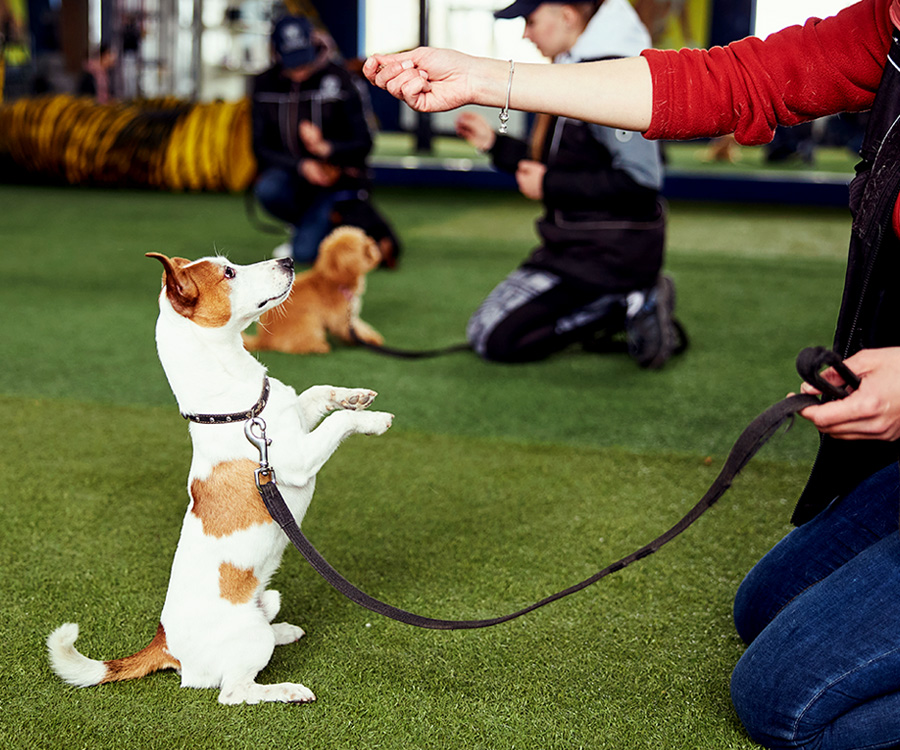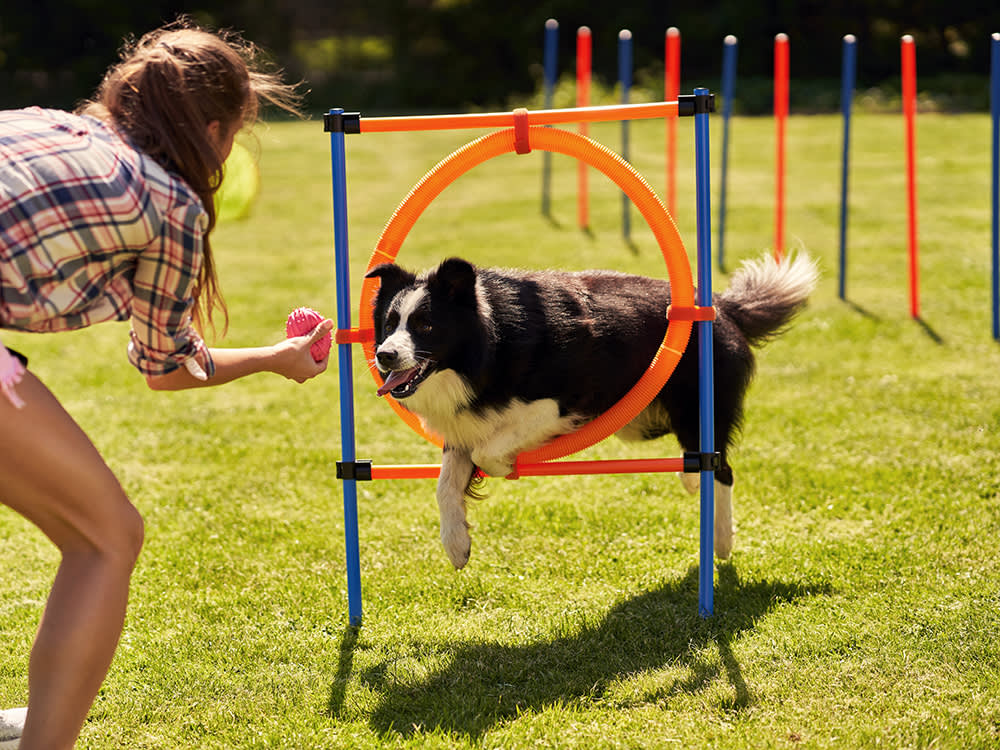Top Pet Training Strategies Every Owner Need To Know

Positive Reinforcement Strategies
Making use of favorable reinforcement techniques is important for effective pet training, as it cultivates a relying on bond in between the fitness instructor and the canine. This approach concentrates on satisfying desirable actions instead of punishing undesirable ones, developing a setting favorable to learning. Rewards can consist of treats, appreciation, or play, which inspire canines to repeat the actions that gain them these benefits.

In addition, this method boosts the dog's interest for training sessions. They are extra engaged and receptive when canines link training with favorable experiences. Dog training. Past immediate habits alteration, positive support encourages a collective relationship in between the pet and trainer, minimizing anxiousness and fear
To make best use of efficiency, it is crucial to provide benefits without delay, making certain the pet dog links the actions with the reinforcement. Fundamentally, positive reinforcement methods not just generate better-trained pets yet likewise promote an unified collaboration in between pet and proprietor.
Remote Control Training Approach
The remote control training approach is an extremely efficient technique that builds on the principles of favorable reinforcement by including a distinct sound to mark preferred habits. This approach utilizes a little handheld device that creates a clicking noise, enabling fitness instructors to interact with their pet dogs in a instant and clear way. When a pet dog does a habits that the owner desires to motivate, the clicker is activated, followed by an incentive, generally in the form of deals with or appreciation.
The secret to successful clicker training depends on uniformity and timing. It is vital to click at the precise moment the desired behavior occurs, guaranteeing that the canine links the audio with the activity and the subsequent benefit. This method not only enhances communication yet additionally promotes a more powerful bond between the proprietor and the pet dog, as it urges involvement and interaction throughout training sessions.
Remote control training can be related to a range of commands and habits, from basic obedience to extra intricate go to this web-site methods. Its flexibility and efficiency make it a popular strategy amongst expert instructors and pet dog proprietors alike, leading the way for a trained and responsive canine friend.
Chain Training Basics
Reliable chain training is necessary for ensuring a safe and delightful strolling experience for both pets and their owners. Dog training. Leash training ought to start early and be come close to with patience and consistency. Beginning by choosing an appropriate chain and collar or harness. A flat collar may benefit some dogs, while others might profit from a harness that lowers pulling.
Present your dog to the leash slowly, enabling them to discover it in a comfy setting. Practice loose-leash walking once they are accustomed. This includes satisfying your pet dog for strolling close to you as opposed to drawing in advance. Usage deals with and praise to reinforce desired behavior, and be sure to continue to be assertive and tranquil.
If your canine begins to draw, quit walking right away. Additionally, practice numerous strolling environments to help your pet adjust to disturbances.
Routine method will strengthen your canine's understanding of leash decorum. Bear in mind that leash training is a recurring process; patience and uniformity will yield the ideal results, cultivating a favorable experience for both you and your canine companion.
Socializing Methods
Socialization is an essential facet of pet dog training that should preferably begin throughout puppyhood but can be valuable at any type of age. Effective socializing helps pets establish confidence and lowers the probability of behavioral concerns. To execute effective Look At This socialization approaches, subject your dog to a range of environments, people, and various other pets.
Beginning with regulated setups, such as young puppy classes or arranged playgroups, where young pets can engage safely. Progressively present your pet to new experiences, including various sounds, surfaces, and tasks. Guarantee these encounters are fulfilling and positive to establish a complacency.
For grown-up pet dogs or those doing not have exposure, begin with low-stress circumstances. Short, favorable communications with pleasant humans and tranquil pets can develop favorable associations. Use treats and appreciation to enhance desirable behaviors during these experiences.

Uniformity and Persistence
Recognizing the value of uniformity and perseverance in pet dog training is necessary for attaining long-term results. Inconsistent training can lead to confusion, making it tough for the pet to comprehend commands or behaviors, eventually hindering progression.
Canines, like humans, find out at their own speed. This promotes a trusting partnership between the canine and proprietor, encouraging a much more prepared and enthusiastic learner.
To cultivate consistency and perseverance, develop a routine training routine, use the very same commands, and guarantee that all member of the family apply the same training concepts - Dog training. By doing so, you develop a steady setting for learning, enabling your canine to create and grow right into a well-behaved friend
Final Thought
To conclude, effective dog training methods, such as positive reinforcement, clicker training, and appropriate chain training, are vital for fostering a healthy and balanced owner-dog connection. Additionally, implementing socializing techniques and keeping consistency and persistence throughout the training procedure contributes considerably to a dog's total wellness. By integrating these approaches, canine proprietors can assist in the development of well-adjusted, loyal family pets, eventually boosting the high quality of life for both the canine and the proprietor.
Among the click reference most noticeable techniques are favorable reinforcement, remote control training, and leash training, each offering unique benefits that add to a mannerly pet. As we discover these basic strategies, it ends up being evident that understanding their nuances can considerably impact the training experience and the pet's total actions.Using positive reinforcement methods is crucial for reliable pet dog training, as it promotes a relying on bond between the trainer and the canine.In final thought, effective canine training strategies, such as positive support, remote control training, and proper leash training, are essential for promoting a healthy owner-dog partnership. By integrating these techniques, dog owners can assist in the advancement of well-adjusted, obedient family pets, ultimately boosting the high quality of life for both the dog and the owner.